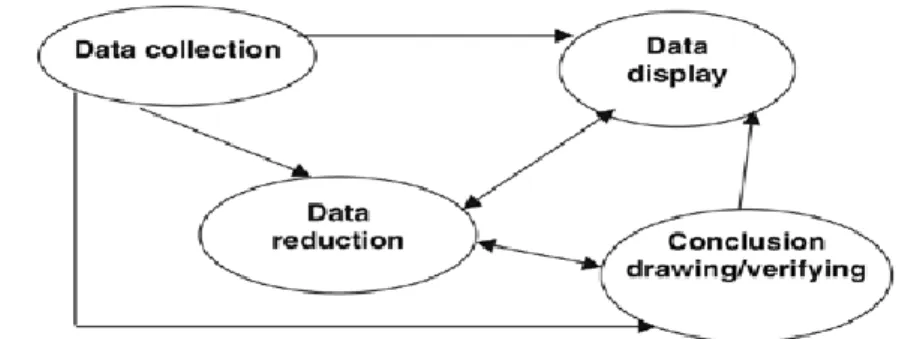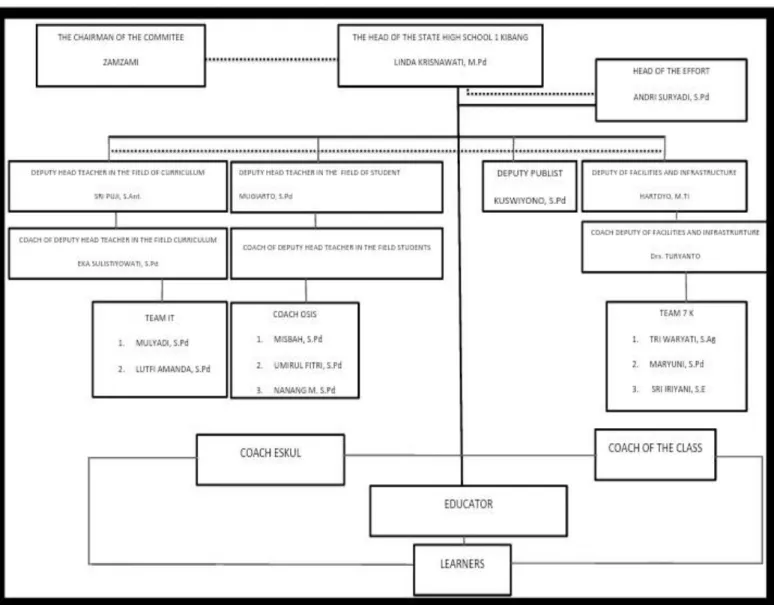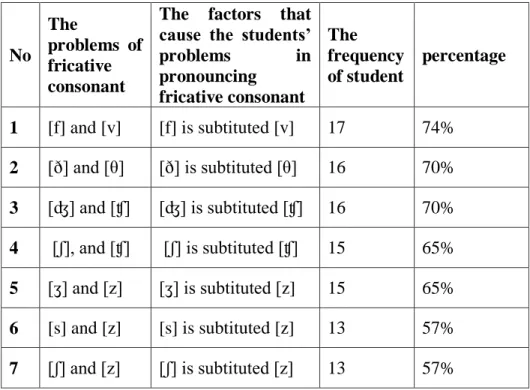Background of study
Research Question
To investigate students' difficulty in pronouncing fricative consonants among eleventh graders at SMAN 1 Kibang East Lampung. This is the difference in the place of research, the time of the researcher and the class that the researcher studies. Another preliminary research was conducted by Anggi Kharismayuda Guntari entitled “Sundanese Students' Production of English Dental Fricative Consonant Sounds”.2 The language skill studied in the second preliminary research is speaking.
The third previous study was conducted by Dedy Kurniawan with the research title “The Error Analysis of The Pronunciation of Dental Fricative consonants (θ/,ð/) by The Students of English Education Study Program Faculty of Teacher Training and Education Sriwijaya University”. language skills studied in the third previous study is speaking. 3 Dedy Kurniawan, “The Error Analysis of the Pronunciation of Dental Fricative consonants (θ/, ð) by the Students of English Education Study Program Faculty of Teacher Training and Education Sriwijaya University” Palembang: Journal of English Literal Education 3, no. The researcher will decide to use qualitative research to analyze the use of fricative consonants of the students' pronunciation on SMA N 1 Kibang of East Lampung.
The researcher receives documents from the result of the use of the fricative consonant in the students' fricative consonant. The eleventh grade problem at SMA N 1 Kibang on utterances [f] and [v] is illustrated in the table below. Based on the results of the research described in the table above, the students are categorized as "right" in the pronunciation of the symbol [s].
The problem of the eleventh grade at SMA N 1 Kibang in pronouncing [dʒ] and [ʧ] is shown in the following table. Based on the observation results in Table 8, it is investigated that 17 students (74%) replaced /∫/ with /t∫/. 2.) Factors that become the causes of students' problems in pronouncing /f/ and /v/. Based on the observation results in Table 8, it is investigated that there are 15 students (65%) who replace /f/ with /v/. 3.) Factors that become the causes of students' problems in pronouncing /s/ and /z/.
Based on the observation result provided on table 8, it is investigated that there are 13 students (57%) who replace /s/ and /z/. 4.) The factors that become the causes of students' problem in pronouncing /θ/ and /ð/. Based on the observation result provided on table 8, it is investigated that there are 16 students (70%) who replace /θ/ and /ð/. 5.) The factors that become the causes of students' problem in pronouncing /s/ and. Based on the observation result provided in table 8, it is investigated that there are 13 students (57%) who replace /s/ and /∫/. 6.) The factors that become the causes of students' problem with pronouncing [ʒ] and [z].
Based on the observation result given in table 8, it was investigated that there are 15 students (66%) who replace [ʒ] and [z]. 7.) Factors that cause students' problems in pronouncing [ʤ] and /t∫/. Meanwhile, the students' lowest problem in pronouncing fricative consonants lies in the problem of pronouncing fricative consonants [s] and [ʃ].

Objective and Benefits of Study
Prior Research
According to the information table above, the pronunciation mastery of SMA N 1 Kibang eleventh grade students in each fricative consonant symbol falls under the criteria of “FAIR”.
GNERAL DESCRIPTION
The Concept of Pronunciation
Pronunciation is the way speech sounds, especially connected sequences, are articulated by individual speakers or by speakers in general.4 It means that pronunciation is the way speech sounds when pronounced, especially the connected sequence, can be articulated by individual speakers or by speakers in general. Pronunciation is essentially a one-on-one activity and can be quite time-consuming.5 Pronunciation is basically an activity done one-on-one and is quite time-consuming. Pronunciation is building a new set of boxes that match the sound of English, and breaking down the arrangement of boxes that our native language's habits have built wrong.6 It means that pronunciation is a way of constructing a new set building boxes that is in harmony with the sound of English, and breaking up the.
As we see from the word "any", it is also possible to have a syllable with only a vowel.7 This means that the components of pronunciation have two types of vowel and consonant. Rhythm, intonation and pronunciation require closer listening; some pronunciation mistakes that can sometimes lead to misunderstanding. Occasional errors of pronunciation, some inconsistencies of rhythm, intonation and pronunciation, but understanding is not hindered.
The Concept of Fricative Consonant
For this to happen, the soft dorsal part of the soft palate is lowered to allow air to pass through it, while it closes somewhere in the oral cavity to stop air escaping through the mouth. Modes are produced by bringing the tip of the tongue closer to the alveolar ridge. It is a way of pronouncing with the body of the tongue forming a groove and approaching the hard ceiling.
The tip of the tongue is held close to the upper teeth, either behind (the teeth) or just below it. Non-native speakers A common pronunciation problem for non-native speakers is the substitution of the fricative /∫/ for the complex affricate sound /t. To understand voicing, consider the pronunciation of the initial consonants in the words "sue" and "zoo".
RESEARCH METHOD
- The Types and Characteristics of Research
- Data Resources
- Data Collecting Technique
- Data Analysis Technique
- Research Approach
The third dominant factor causing the students' problem with the pronunciation of fricative consonant is the replacement of [ʤ] and [ʧ] by 70%. The fifth dominant factor causing the students' problem in pronouncing fricative consonant is the substitution of [ʒ] and [z]. Meanwhile, the students' lowest problem with pronouncing fricative consonants lies in the problem with pronouncing fricative consonants [s] and [ʃ].
The most dominant factor causing the pupils' problem in pronouncing fricative consonants is the replacement of [f] and [v] at 74%. The fifth dominant factor causing the students' problem in pronouncing fricative consonants is de. The sixth dominant factor causing the students' problem in pronouncing fricative consonants is the replacement of [s] and [z] by 57%.
RESULT OF THE RESEARCH AND INTERPRETETI
Result of The Research
Cultivating the trust of the community and stakeholders in the development and progress of the school. Some of the above tables show that in SMA N 1 Kibang has sufficient facilities and pre-facilities as they are all in place to support teaching and learning activities in the school. What are the students' difficulties in pronouncing English fricative consonants in the eleventh grade of SMAN 1 Kibang East Lampung.
What factors become the causes of students' problems in pronouncing fricative consonants among the eleventh graders at SMAN 1 Kibang East Lampung. How to solve students' problems in pronouncing the English fricative consonants among the eleventh graders at SMAN 1 Kibang East Lampung. Students' problems in pronunciation of English fricative consonant among eleventh grade in SMAN 1 Kibang East Lampung.
Based on the results of the research described in the table above, students are categorized as "correct" in pronouncing the symbol [f] in the known word with 26 points or 28.29%. Based on the results of the research described in the table above, students are categorized as "right" in pronouncing the symbol [s] in the word sun with 44 points or 48.89%. Based on the research results described in the table above, students are categorized as "correct" in pronouncing the symbol [ʧ] in the word pension with 37 points or 40.25%.
Based on the results of the research described in the table above, students are categorized as "Birlik" by pronouncing the symbol [ð] on the words clothes with 28 points or 30.45%. The factors that become the causes of students' problems in pronouncing fricative consonants among the eleventh graders at SMAN 1 Kibang East Lampung.

Interpretation
Moreover, the fourth dominant factor that causes students' problem in pronouncing fricative consonant is the substitution of [ʃ], and [ʧ] with 65%. The seventh dominant factor causing students' problem in pronouncing fricative consonant is the substitution of [ʃ] and [z] with 57%. In addition, the second dominant factor causing students' problem in pronouncing fricative consonant is the substitution of [ð] and [θ] by 70%.
Dengan menganalisis fungsi sosial, struktur teks, dan unsur kebahasaan dalam ungkapan memberi saran dan tawaran, serta tanggapannya, sesuai dengan konteksnya. Analisis fungsi sosial, struktur teks, dan unsur kebahasaan dalam ungkapan harapan dan doa panjang, sesuai dengan konteks penggunaannya 4.3 Komposisi. Ketepatan dan ketepatan penggunaan struktur dan unsur bahasa dalam pengungkapan harapan dan doa serta jawabannya.
Mengevaluasi poin pembelajaran berbagi waktu. diperpanjang) memperhatikan fungsi sosial, struktur teks, dan unsur kebahasaan, yang akurat dan sesuai konteks. Siswa menerima umpan balik dari guru dan teman tentang fungsi sosial dan unsur bahasa yang disampaikan dalam kerja kelompok. Analisis fungsi sosial, struktur teks, dan unsur kebahasaan teks surat pribadi, sesuai dengan konteks penggunaannya 4.7.
Siswa menganalisis berbagai jenis surat pribadi yang berkaitan dengan tujuan, struktur teks dan unsur kebahasaan, ditinjau dari ketepatan, efisiensi dan efektifitas. Siswa menerima umpan balik dari guru dan teman tentang fungsi sosial dan unsur bahasa yang disampaikan melalui surat pribadi. Dengan pertanyaan panduan dari guru, siswa mempertanyakan tujuan komunikatif, struktur dan unsur kebahasaan dari teks prosedur eksplorasi.
Siswa menerima umpan balik dari guru dan teman tentang hasil analisis fungsi sosial, struktur, dan unsur kebahasaan teks berita yang disajikan dalam kerja kelompok komunikasi. Analisis fungsi sosial, struktur teks, dan unsur kebahasaan teks eksposisi analitik pada topik topik yang sedang dibahas. Secara berpasangan, siswa menganalisis berbagai teks pameran dengan fokus pada fungsi sosial, struktur, dan unsur kebahasaan.
Siswa berbagi cerita tentang teks eksposisi secara berkelompok, memperhatikan fungsi sosial, struktur dan unsur kebahasaannya. Secara berpasangan, siswa menganalisis beberapa teks biografi dengan penekanan pada fungsi sosial, struktur dan unsur kebahasaan.

Conclusion
Suggestion